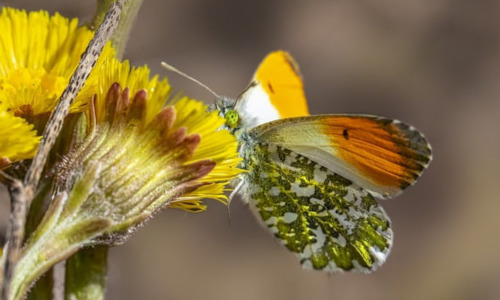autumn什么意思
Autumn, in its simplest form, means fall. It’s the season between summer and winter, characterized by falling leaves, cooler temperatures, and the harvest of crops. However, the meaning of “autumn” extends beyond this simple definition. It evokes a rich tapestry of sensory experiences, emotional responses, and cultural significance that varies across different regions and throughout history. The vibrant hues of red, orange, and gold that paint the landscape during autumn are not merely a change in leaf color; they represent the culmination of a year’s growth, a period of preparation for the dormancy of winter. The crisp air, the scent of decaying leaves, the sound of rustling foliage – these are all elements contributing to the distinct atmosphere of autumn. Furthermore, autumn is intricately woven into the fabric of human culture, inspiring countless works of art, literature, and music. From the harvest festivals celebrated across the globe to the melancholic beauty often associated with autumn’s fleeting nature, the season holds a deep and enduring resonance within human consciousness. It is a time of reflection, a season that symbolizes both endings and beginnings, the letting go of summer’s exuberance and the anticipation of winter’s quietude. The word itself, with its evocative sound, embodies the season’s unique character – a blend of warmth and coolness, abundance and transition. Understanding “autumn” therefore requires exploring not only its meteorological definition but also its multifaceted cultural and emotional dimensions.
 Autumn, also known as fall in North America, is a transitional season marked by a gradual decrease in temperature and daylight hours. This change triggers a fascinating physiological process in deciduous trees, leading to the spectacular display of autumn foliage. Chlorophyll, the green pigment essential for photosynthesis, breaks down as the days shorten and temperatures drop. This reveals the underlying yellow and orange pigments (carotenoids) that were present in the leaves all along, but masked by the chlorophyll’s dominance. The brilliant reds and purples, however, are a different story. These colors are actually produced during autumn, as the tree breaks down chlorophyll and produces anthocyanins, pigments that give leaves their striking crimson hues. This process is influenced by several factors including temperature, sunlight, and soil moisture. A combination of warm sunny days and cool nights is often ideal for producing the most vibrant colors. The leaves eventually detach from the branches due to a layer of cells forming at the base of the leaf stalk, a natural process that allows the tree to conserve water and energy during the winter months. This leaf abscission is not a sudden event but a gradual process that takes place over several weeks.
Autumn, also known as fall in North America, is a transitional season marked by a gradual decrease in temperature and daylight hours. This change triggers a fascinating physiological process in deciduous trees, leading to the spectacular display of autumn foliage. Chlorophyll, the green pigment essential for photosynthesis, breaks down as the days shorten and temperatures drop. This reveals the underlying yellow and orange pigments (carotenoids) that were present in the leaves all along, but masked by the chlorophyll’s dominance. The brilliant reds and purples, however, are a different story. These colors are actually produced during autumn, as the tree breaks down chlorophyll and produces anthocyanins, pigments that give leaves their striking crimson hues. This process is influenced by several factors including temperature, sunlight, and soil moisture. A combination of warm sunny days and cool nights is often ideal for producing the most vibrant colors. The leaves eventually detach from the branches due to a layer of cells forming at the base of the leaf stalk, a natural process that allows the tree to conserve water and energy during the winter months. This leaf abscission is not a sudden event but a gradual process that takes place over several weeks.
Beyond the botanical aspects, autumn holds a significant place in various cultures and traditions. Harvest festivals, celebrating the culmination of the agricultural year, are common throughout the world. These celebrations, often marked by feasts, dances, and rituals, reflect humanity’s deep-seated connection to the land and the cyclical nature of life. In many societies, autumn is also associated with themes of reflection, introspection, and preparation for the winter months. The shorter days and cooler temperatures encourage a slower pace of life, providing an opportunity for contemplation and planning. This introspective aspect has influenced countless works of art, literature, and music, where autumn often symbolizes the passage of time, the bittersweet beauty of change, and the acceptance of endings. From the melancholy poetry of Keats to the vibrant paintings of Van Gogh, autumn’s evocative qualities have inspired creative expression for centuries. The imagery of falling leaves, harvested crops, and the changing landscape serves as a powerful metaphor for the cyclical nature of life and the constant process of transition that characterizes the human experience. Even the culinary aspects of autumn, from pumpkin spice lattes to hearty stews, contribute to its unique character, adding another layer to its rich and multi-faceted meaning. In conclusion, understanding the meaning of “autumn” involves appreciating its meteorological significance, its botanical intricacies, and its deep-seated cultural and emotional resonance.

Autumn’s Impact on Wildlife: A Time of Change and Adaptation
The arrival of autumn profoundly impacts the animal kingdom, triggering a cascade of behavioral and physiological changes crucial for survival through the colder months. Many animals prepare for winter by accumulating fat reserves, a vital energy source when food becomes scarce. This process involves increased feeding activity in the weeks leading up to winter, enabling them to store sufficient energy for hibernation or migration. Hibernation, a state of dormancy characterized by reduced metabolic rate and body temperature, is employed by various mammals, including bears, bats, and groundhogs. These animals seek out sheltered locations like dens or burrows to spend the winter in a state of reduced activity, conserving energy until spring’s return.
Migratory birds, on the other hand, undertake long and arduous journeys to warmer climates, escaping the harsh winter conditions of their breeding grounds. These migrations are genetically programmed behaviors, involving remarkable navigational skills and endurance. Birds utilize various cues, including celestial navigation, magnetic fields, and landmarks, to guide their flights over vast distances. The timing of migration is finely tuned to coincide with the availability of food resources in their wintering grounds. Many bird species exhibit striking changes in plumage during autumn, adopting less vibrant colors that offer better camouflage in their winter habitats.


For animals that remain active throughout the winter, autumn brings a crucial period of preparation. Squirrels, for example, diligently collect and bury nuts and seeds, establishing food caches to sustain themselves through the lean winter months. This behavior showcases a remarkable degree of spatial memory and planning, enabling them to locate their hidden stores when food is scarce. Similarly, other small mammals, such as mice and voles, increase their food intake and build nests for insulation and protection against the cold. Their nests are often meticulously constructed, utilizing a variety of materials to ensure warmth and security.
Autumn also impacts the reproductive strategies of many animals. Many species enter a period of reduced reproductive activity, either postponing breeding until the spring or adjusting their reproductive cycles to coincide with the peak abundance of food resources. This careful timing ensures the survival of offspring, as the availability of food plays a crucial role in their growth and development. Some species, like deer, engage in rutting season, a period of intense mating activity, during the autumn. The males compete for access to females, often exhibiting impressive displays of strength and dominance.
In conclusion, autumn’s influence on wildlife is far-reaching and complex. The changing environmental conditions trigger a cascade of adaptive behaviors and physiological adjustments that ensure the survival of many species through the winter months. From hibernation and migration to food caching and adjusted reproductive strategies, animals demonstrate remarkable adaptability and resourcefulness in responding to the challenges of the season. Understanding these adaptations provides valuable insight into the intricate interactions between wildlife and their environment, emphasizing the importance of conserving biodiversity and protecting natural habitats.


评论